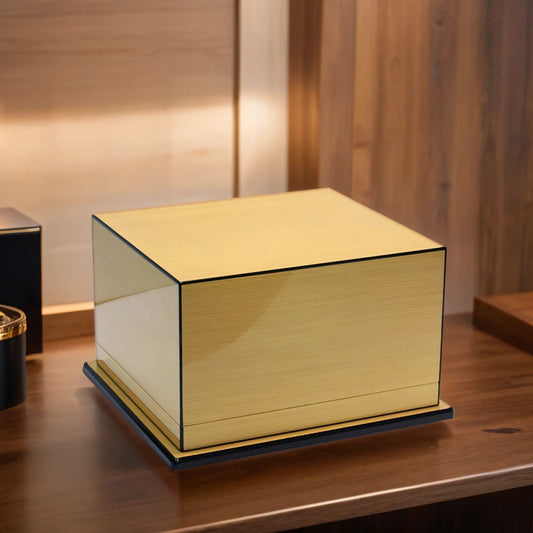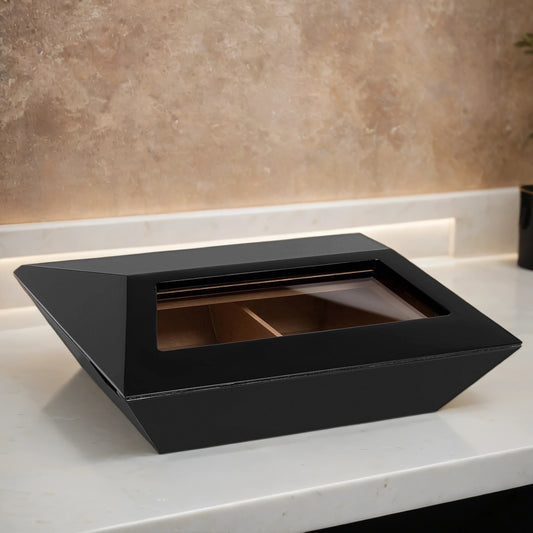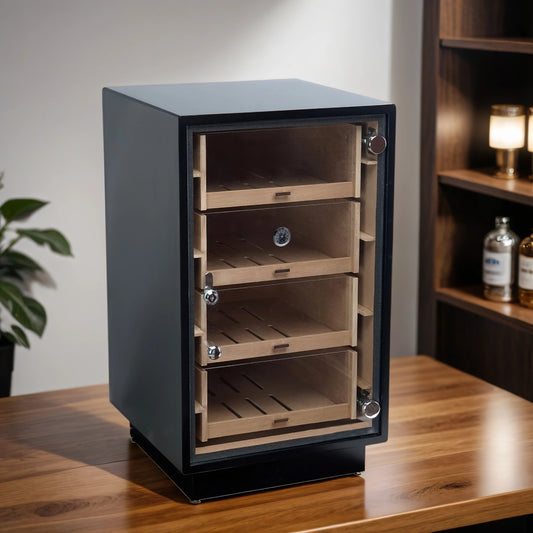
How to Calibrate a Hygrometer
Maintaining the right humidity level in your humidor is essential for preserving your cigars' flavor, texture, and overall quality. The key to achieving this lies in having an accurate hygrometer, which measures the relative humidity (RH) inside your humidor. However, even the best hygrometers can become inaccurate over time. That’s why calibrating your hygrometer is critical.
In this guide, I’ll walk you through everything you need to know about how to calibrate a hygrometer, the differences between analog and digital models, how long it takes to get an accurate reading, and tips for maintaining your humidor in prime condition. Whether you're a seasoned cigar smoker or just getting started, this comprehensive guide will help you keep your cigars in perfect shape.
Why It’s Important to Calibrate a Hygrometer
If you’re storing cigars in a humidor, an accurate hygrometer is your best friend. Without proper calibration, the readings can be off, leaving your cigars too dry or too moist. If the RH inside your humidor drops below 65%, your cigars may dry out, lose flavor, and burn unevenly. On the other hand, too much humidity (above 75%) can lead to mold, swelling, and other issues you definitely don’t want when you’re trying to enjoy a good smoke.
Calibration ensures that your hygrometer is providing the correct RH levels, making sure that your humidor stays in the ideal range—usually around 70%. Regular calibration also helps prevent the dreaded "dry cigar" or "soggy cigar" experiences, which can ruin the taste and smoking quality. It’s a simple process, but one that can make all the difference when it comes to cigar preservation.
Optimal Humidity Levels for Your Humidor
The sweet spot for cigar storage is typically between 65% and 75% RH, with many cigar lovers aiming for exactly 70%. This range mimics the natural environment where cigars are produced, ensuring they retain their full flavor profile and burn consistently. When calibrating your hygrometer, you’ll want to adjust it so it accurately reflects these levels.
Remember, it's not just about RH—temperature plays a role too. Ideally, your humidor should also be kept at around 70°F to complement the humidity. A hygrometer with both humidity and temperature readings can be a helpful tool for keeping your cigars in their optimal condition.
How to Calibrate a Hygrometer: Step-by-Step Guide
The most common way to calibrate a hygrometer is through the salt test. Here’s how to do it:
The Salt Test (For Analog and Digital Hygrometers)
- Gather your supplies: You’ll need a small container (like a bottle cap), table salt, distilled water, a sealed plastic bag, and your hygrometer.
- Prepare the salt solution: Add a teaspoon of salt to the container and mix in just enough distilled water to create a thick, pasty consistency. Don’t overdo it on the water—if the salt is floating, you’ve added too much.
- Seal it up: Place the salt container and your hygrometer in the plastic bag. Seal the bag tightly to ensure no outside air gets in.
- Wait 6-8 hours: Leave the bag undisturbed in a room with stable temperature conditions for 6-8 hours. During this time, the hygrometer should read 75% RH, which is the humidity level created by the salt solution.
- Adjust your hygrometer: After the waiting period, check the reading. If the hygrometer doesn’t read 75%, adjust it. For analog models, this usually involves turning a small screw on the back. Digital hygrometers typically have a calibration button for adjustments.
Once your hygrometer is calibrated, it should give you accurate readings inside your humidor.

The Boveda Pack Method
If you don’t want to mess with salt, there’s an alternative: the Boveda calibration kit. These kits contain a humidity pack designed to create a 75% RH environment. All you need to do is place your hygrometer and the Boveda pack inside a sealed container and wait 24 hours. Afterward, adjust your hygrometer just like in the salt test.
The Boveda method is a bit more convenient and less messy than the salt test, though it can be more expensive if you don’t already have the packs lying around.
Analog vs. Digital Hygrometers: Key Differences in Calibration
There are two main types of hygrometers: analog and digital. Here’s what you need to know about calibrating each:
Analog Hygrometers
Analog hygrometers are the more traditional option, often included with classic wooden humidors. They rely on mechanical parts, which can make them less accurate over time and prone to drift. To recalibrate, you’ll need to use a small screwdriver to adjust the needle after performing the salt test.
Analog models require more frequent calibration than their digital counterparts—every six months is recommended. If you want that old-school aesthetic, analog hygrometers are a solid choice, but be prepared for some extra upkeep.
Digital Hygrometers
Digital hygrometers, on the other hand, are generally more accurate right out of the box and easier to recalibrate. Most have a button that lets you fine-tune the reading after the salt test or Boveda test. They also typically come with temperature gauges, which can be a bonus for monitoring your humidor’s overall environment.
The downside? Digital hygrometers run on batteries, so you’ll need to keep an eye on that as well. However, they’re generally low-maintenance and only need calibration once or twice a year.
How Long Does It Take to Get an Accurate Reading?
Whether you’re calibrating or just checking the humidity in your humidor, it’s important to allow enough time for the hygrometer to adjust. For most digital models, 6-8 hours is enough to get an accurate reading during calibration. Analog models can take a bit longer, but 24 hours is usually the maximum amount of time you’ll need.
After calibration, when you place the hygrometer back in your humidor, allow it to sit for a few hours to give an accurate RH reading. Keep in mind that every time you open your humidor, the RH fluctuates, so give it some time to stabilize before making any adjustments.
Maintaining an Accurate Hygrometer
Once your hygrometer is calibrated, it’s important to regularly monitor the readings and recalibrate as necessary. Here are a few tips to help keep things accurate:
- Check every six months: Regular calibration ensures ongoing accuracy.
- Monitor temperature: If your hygrometer also tracks temperature, aim for a stable 70°F.
- Keep it clean: Dust and debris can interfere with the hygrometer’s readings, so wipe it down occasionally.
- Log your readings: Keeping a record of humidity levels can help you identify any trends or issues with your humidor.
Conclusion
Calibrating a hygrometer is a simple but vital step in maintaining the ideal environment for your cigars. Whether you use the salt test or a Boveda calibration kit, ensuring accurate readings will help preserve your cigars' flavor, texture, and overall quality. Remember, both analog and digital hygrometers have their pros and cons, but regular calibration is key no matter which type you choose.
So, grab that screwdriver or calibration kit, and make sure your humidor is ready to keep your cigars in perfect smoking condition.












